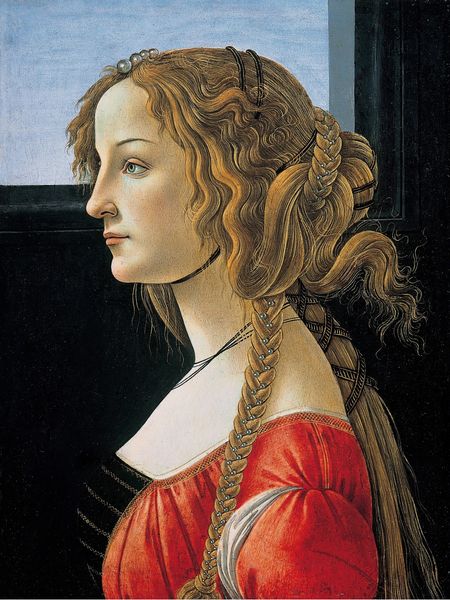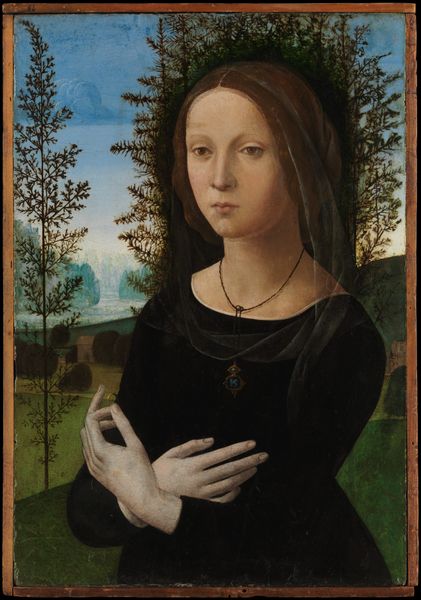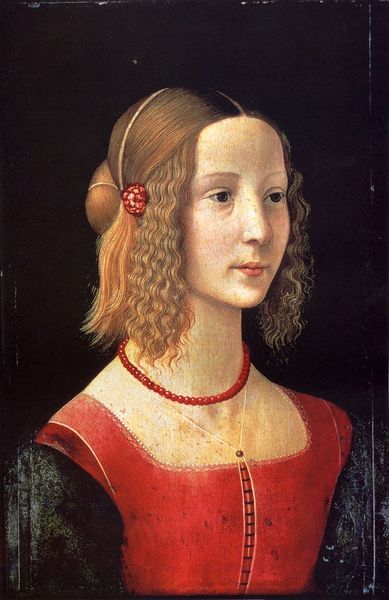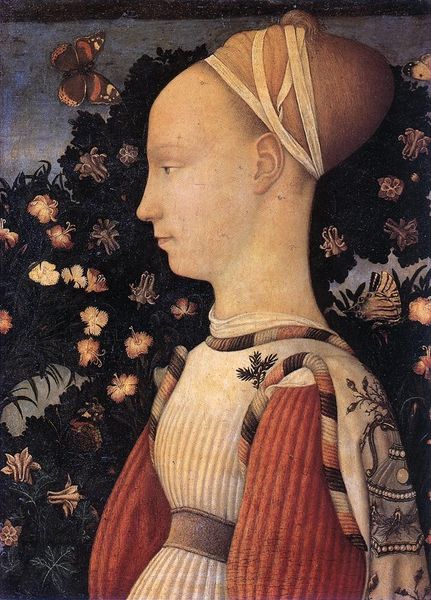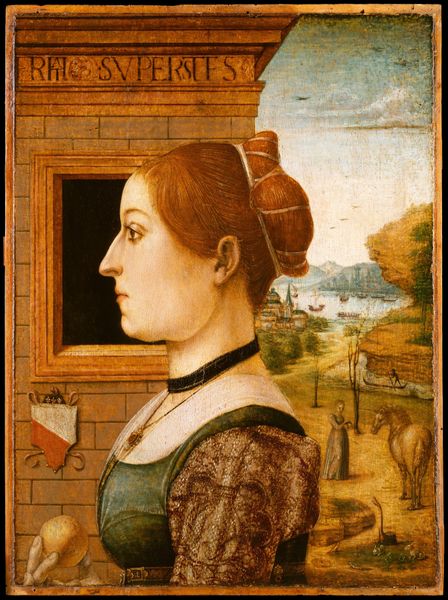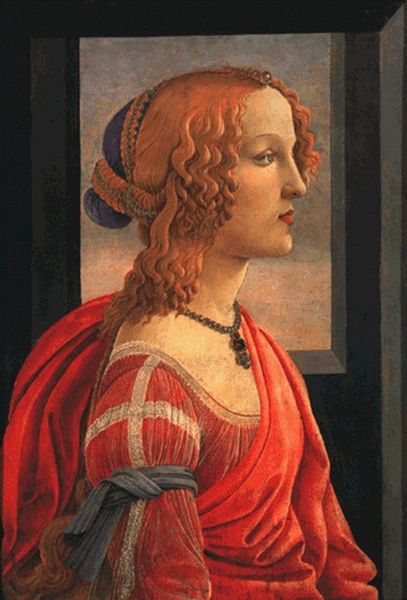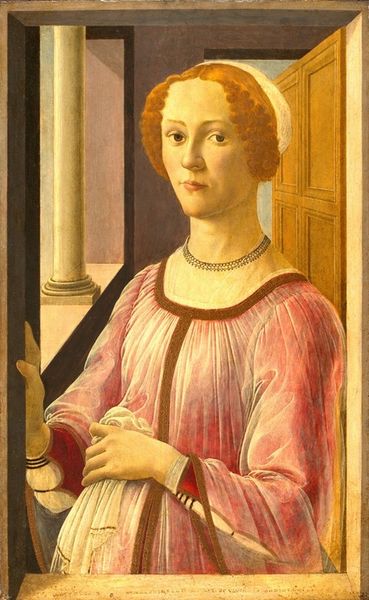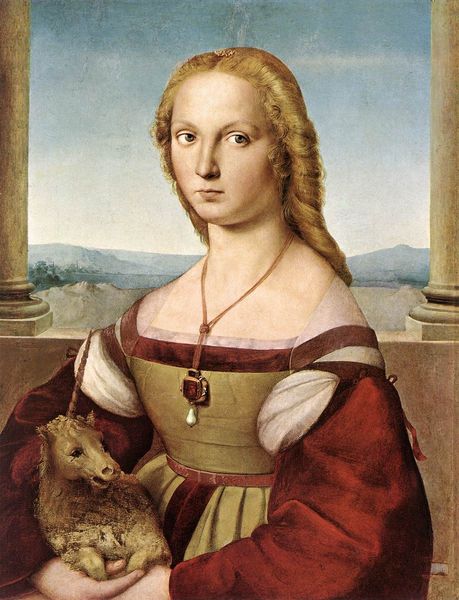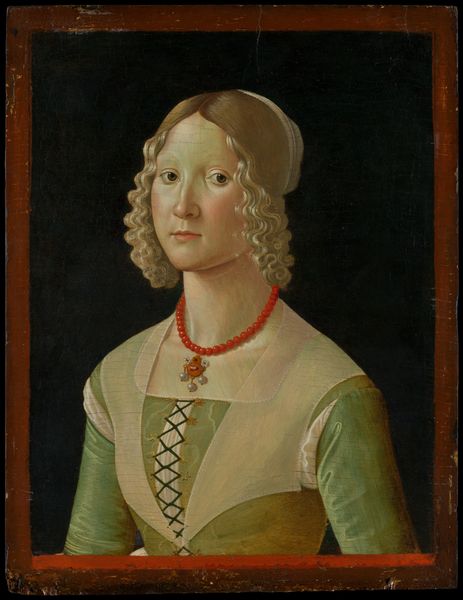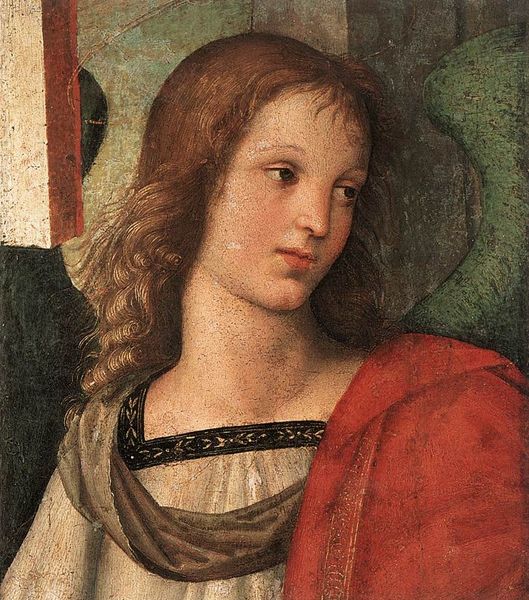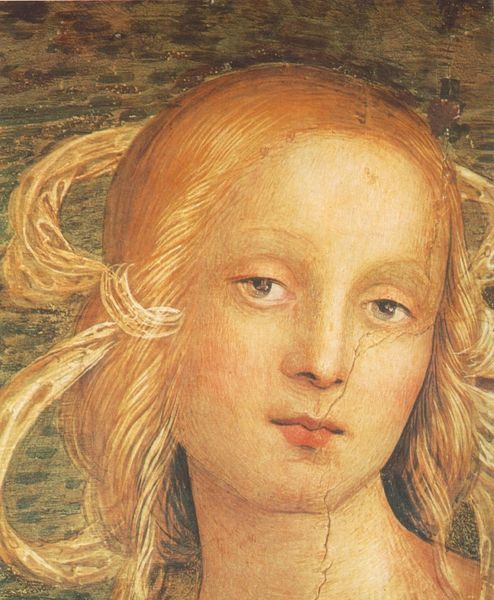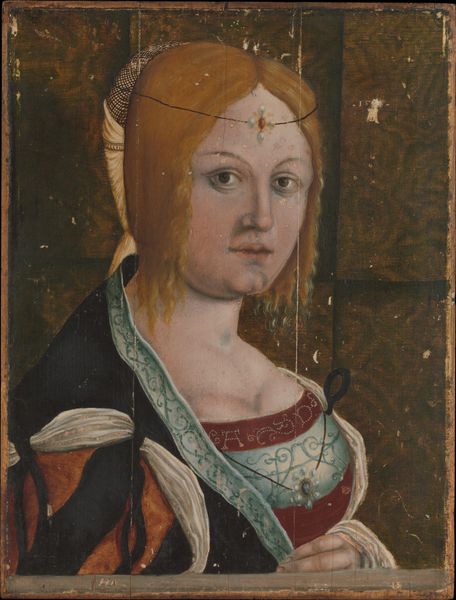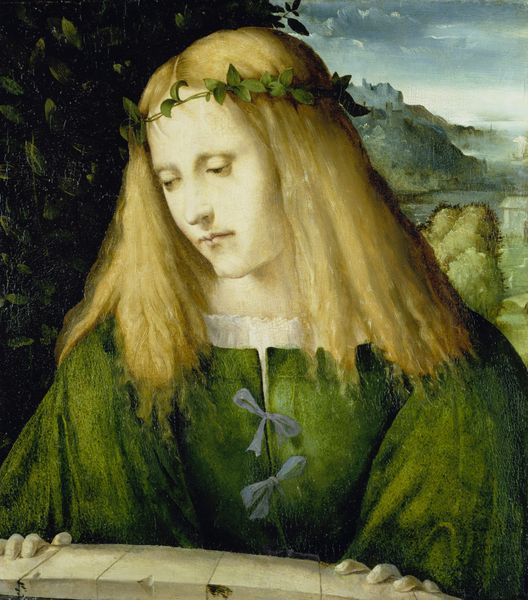
painting, oil-paint
#
portrait
#
painting
#
oil-paint
#
landscape
#
figuration
#
oil painting
#
italian-renaissance
Dimensions: 56.1 x 37.7 cm
Copyright: Public domain
Editor: Standing before us is Ghirlandaio's "Portrait of a Lady" from around 1490, currently housed at the Clark. The oil paint seems to render her a vision of quiet, refined composure. How would you interpret the work? Curator: Looking at the portrait, I see a remarkable convergence of materials, skill, and societal demands. Ghirlandaio’s workshop production involved meticulous labor. Consider the oil paint: grinding pigments, mixing the binder—these were crafts crucial to the final artwork. This wasn’t simply inspiration; it was skilled physical work, the kind typically separated from “high” art, but here it is inextricable from the portrait's impact. Editor: That's interesting. I hadn’t considered the materiality that intensely. So the grinding and mixing impacts the piece itself? Curator: Absolutely. Think about where the pigment came from—trade routes, perhaps. And that gown, likely silk or velvet – imagine the complex system of production and commerce supporting such an expensive display. These materials weren’t just colours; they signified status, wealth, a whole socio-economic order manifested materially. Editor: It's a much richer interpretation than simply analyzing the composition! Do you think focusing on the materials challenges traditional ideas of art? Curator: Yes! It compels us to confront the socio-economic forces that shaped artistic creation. We move beyond aesthetic contemplation and consider how material realities condition what art can be. How is luxury expressed here, and at what cost? Editor: Thinking about where those materials originated and the process of actually *making* the paint and the clothing transforms the way I see not only this portrait but other works too. Thank you. Curator: Indeed, it’s in tracing the materials, labour, and societal connections that we gain a truly profound understanding of a work like this.
Comments
No comments
Be the first to comment and join the conversation on the ultimate creative platform.
